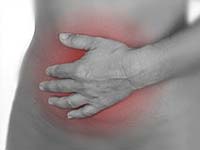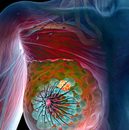The accumulation of liquid content in the stomach is called ascites. The classification of ascites is based on origin, qualitative composition and causes that caused this pathological process. The main causes of the disease are cirrhosis of the liver and heart failure.
Content
Classification of ascites
Traditional definition of ascites - «Cluster of transudate in the abdominal cavity» (from Grech. ASCOS - Bag for Water, Wine) only partially reflects the essence of this pathological process.
With the current positions of medicine, ascites should be considered as the presence of a variety of occurrence and composition of liquids in the abdominal cavity caused by those or other diseases, injuries or therapeutic effects. It is advisable to distinguish with liquid, gaseous and dense content of the abdominal cavity.
Liquid content, in turn, can be due to a number of reasons. Among them, the first place is occupied by decompensated liver cirrhosis of various etiologies, as well as heart failure.
Mechanisms for the formation of liquids are due to the nature of one or another pathology. Thus, the formation of transudate in cirrhosis is associated with protein imbalance (hypoalbuminemia), an increase in intravascular pressure in the portal vein system, sodium delay and water, peripheral vasodilation, increasing levels of renin, aldosterone, vasopressin and nonradenaline in plasma, changes in the peright membrane permeability.
Exudative contents of the abdominal cavity - result, as a rule, inflammatory process (acute pancreatitis, acute cholecystitis, peritonitis). Special forms of ascites include trousers carcroids, especially when cancer of ovarian.
A very rare form of ascite is chiperitoneum - the accumulation in the abdominal cavity of the lymph, due to the injury of the abdominal department of the main lymphatic duct. Also hyperpression of lymphs and its diapected due to the obstacle at the mediastinal level (tumor, stricture).
More detailed consideration requires the so-called «Therapeutic ascites». Intrabryitchin introduction of certain solutions - a fairly widely used method in surgical practice (peritoneal lavage, chemotherapy, etc.). In some cases, the dose of infusates is very significant (3-5 l), which creates real conditions for leaving part of the liquids in the abdominal cavity.
In addition, the basis of the new classification of the basic nature of the character of the contents of the abdominal cavity must be considered:
- Number of liquid
- Her infection
- The degree of exposure to medication treatment
From these positions it is necessary to distinguish the following contents of the abdominal cavity.
By the amount of liquid:
- Small
- moderate
- Significant (tense, massive ascites)
By infection of content:
- Sterile
- infected
- Bacterial peritonit
By a medication answer:
- Amenable to medicine therapy
- Refractory ascites
Undoubtedly, mixed ascites meet - tracessative-exudative, exudative-hemorrhagic, etc.
Surgical methods for the treatment of ascites
 The treatment of ascites should be based on the etiological principle, taking into account the pathogenetic factors of its development.
The treatment of ascites should be based on the etiological principle, taking into account the pathogenetic factors of its development.
Operational methods of treatment of ascites are divided into direct and indirect.
Straight:
- Laparocenthesis
- Peritonenevous Shunt (PVC)
- Partial demeritonization of the walls of the abdominal cavity
Indirect:
- Splenorenal
- Portocaval
- Mesenterico-Cavalny
- Transjugular intrathole portolesystem shunting (TSSH)
- splenectomy
- Ending or embolization of the spleen artery and its branches
- Lymphovenomous coolest
- Bien transplantation









